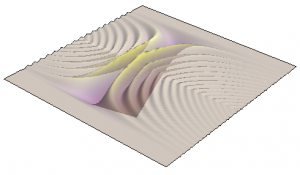Anti-symmetry and entanglement
- Post by: admin
- October 22, 2009
- No Comment
Our paper “Anti-symmetrisation reveals hidden entanglement” has been accepted to published in New Journal of Physics. This is one out of four papers which formed my PhD thesis and the last one to make it into a peer-review journal.

The paper offers a new take on the famous Hong-Ou-Mandel effect in quantum optics. Imagine two photons hitting a symmetric beamsplitter. They can either leave the beamsplitter together, in a single output mode, or apart, i.e. through separate output modes. In quantum physics, the probability amplitudes for these events can interfere. Two photons, indistinguishable in all respects (temporally, spatially, spectrally…), will bunch, i.e. they will always leave the beamsplitter together. Hong, Ou and Mandel demonstrated this phenomenon by changing the relative temporal delay of the photons and measuring them behind a beamsplitter in coincidence . For delays on the order of the photon coherence length, they observed a drop in the coincidence rate, with a minimum located at zero delay – the Hong-Ou-Mandel, or in short, HOM-dip (click here for an interactive demonstration). This effect is one of the pillars of experimental quantum optics with single photons and has been exploited in various flavours for a myriad of experiments.
One particularly interesting aspect of two-photon interference is that whenever the photons anti-bunch, which is the opposite of bunching, the photons must have been entangled to some extent. This is due to symmetry: In order to anti-bunch at a beamsplitter, the spatial part of the wavefunction of the photons must have been (partially) anti-symmetric. This in turn is a unique signature for entanglement, as pointed out in this comprehensive paper by K. Wang.
In our work, we argue that one can deliberately change the spatial symmetry of a quantum state to reveal entanglement on a beamsplitter. Experimentally, we achieve that by tuning the central frequency differences of two photons and measuring two-photon interference. The resulting patterns show frequent anti-bunching above the random level, a signature of the underlying frequency entanglement, which emanates from the creation process of the photons. The neat thing about the experiment is that the experimental method is very simple and does not require any frequency filtering unlike earlier quantum beating experiments. The neat thing about the concept is that it should be applicable to general quantum systems, beyond our simple demonstration with photons.